Can I face solar panels North, East and West?
It’s a solar panel design question I pose to almost every electrician and solar salesman I interview: “Can we install solar panels without optimisers on three different orientations?” Nine out of ten times, their answer is wrong.
To explain the answer, I’ll go back to the basics with the power formula. Next, I’ll explain how we design solar panel systems both in series and in parallel, and how this affects voltage and current. Then I’ll show how, with a standard string inverter, we can install solar panels in more than two orientations. Finally, we’ll consider some things we should avoid when paralleling east and west, and more efficient options that are available in these situations.
Lesson #1: Power = volts × current.
Watts, volts, amps, power, current. You may be familiar with all these terms but might be uncertain about how they relate to one another. I’m going to explain these terms with the water pipe analogy. (The way I explain it is simplified – it’s not a perfect analogy.)
- Current is similar to the size of the water pipe. The bigger the pipe, the more water can flow. We measure current in Amps (I).
- Volts is like the water pressure on the street or the pressure behind the water pipe. In Australia, that “pressure” for electricity is 240 volts (V).
- Power (P) is the result of the two. A fire hose has a lot of power because it’s a big hose flowing at high pressure. We measure power in Watts (W).
There are three ways we can write the formula; all mean the same thing.
You can use this basic formula with household appliances.
A 2400W kettle plugs into a 240v powerpoint. How much current does it draw?
2400W = 240v × 10A
Or use it for solar design:
A single solar panel is operating voltage is 30V and 8amps. How much power is it producing?
240W = 30V × 8A
Lesson #2: Voltage is added in series
When we design a solar panel system on a roof, we generally connect them in”strings”. A string is a group of panels (usually between 5 and 13 panels) “daisy chained” together – or more correctly connected in series.
In this diagram, we have seven solar panels strung together in series. One panel (with reasonable sunshine) produces 8amps and 30 volts. As mentioned earlier, that one solar panel will produce: 30V x 8A =240W.
When we combine the seven solar panels, we have 210v but still only 8amps.
210v x 8a = 1680 W.
Note that the voltage is added in series, the current remains the same.
Lesson #3: Current is added in parallel
When we parallel two of these strings, instead of adding the parallel voltages together, we add the current together, and end up with 210 Volts and 16 amps,
210v x 16a = 3360W
This time the current is added in parallel, the voltage remains the same.
Lesson # 4: Solar panel design on a simple roof
Now let’s design the parallel string of 7 solar panels and the single string of 7 panels on the roof. To make the job simple, we’ll first choose a big house with a solar-friendly roof.
Most string inverters have two separate inputs called Maximum Power Point Trackers or MPPT’s. As the sun’s intensity and angle on the solar panel changes during the day, the MPPT continually “Tracks” and adjusts the voltage and current to find the “Point” where it can achieve the “Maximum Power”.
Notice how each string of solar panels is facing the same orientation. We have one string of eight panels facing North, and two strings of eight panels parallelled into the other tracker facing east.
But let’s get back to reality. Not every roof is so solar panel design friendly. Let’s look at what happens if your roof is more limited for space.
Lesson # 5: A series string of solar panels must face the same direction
This one is straight out of the Australian Standards.
PV modules that are electrically in the same string shall be all in the same orientation within ±5 (azimuth and tilt angle).
ASNZ 5033 clause 2.1.6
There is a good reason for this. Current flowing through a string of solar panels is limited to the weakest panel just like water flowing in a hose is limited by a kink in a hose.
This example shows a series string of six panels, three panels facing east and three facing west. In the morning, the eastern panels would be dragged down by the west. Then in the afternoon the western panels would be dragged down by the east.
(As a side note, we could not parallel these panels, as a string of 3 will only run at around 90 volts, which is too low for most inverters. In this case, we would need to use optimisers).
Lesson 6: The Myth, Parallel strings must face the same direction
Here’s where many solar electricians and solar salespeople get unstuck with a solar design. They know that all panels in a string must face the same direction, but then they assume all the panels connected to one MPPT must face the same direction.
If we apply the knowledge we have so far; it seems to make sense. We face series panels in different orientations because the panels that run at a lower current will act like a kink in the hose.
The idea then is that we also cannot design parallel panels to face different orientations, because the panels that run at a lower voltage will drag down the panels that run at a higher voltage.
But, it turns out, working within inverter input current limitations, we can!
Solar panel design East-West on 1 MPPT
You may know enough about you household electricity to know that runs at 240volts. This figure is relatively constant, in fact by regulation it can be should sit between 220 volts and 253 volts. So when you are using more power at home, it is not because the voltage is changing – it is the current that is changing.
Now back to solar panels. When the inverter first turns on in the morning, each solar panel operates at about 30 volts and 0.1 of an amp. As the sun comes up in increases to 2amps, then 3amps and until it reaches it’s maximum of around eight amps at full sun. The voltage, however, remains about the same: around 30 Volts.
Below is Fronius monitoring data of an east-west system we installed last year. Because we did not need to parallel this job, we have the voltage data of the east and west array running on separate MPPTs.
The Blue line shows the power increased during the morning. For simplicity, I haven’t displayed current it in this image, but it follows the blue power curve. While the two DC voltages don’t perfectly match, they remain similar – usually within 5 percent of 350 volts. If this solar panel design was with two strings to only one MPPT, then the MPT would adjust the voltage to the point that would allow the most power to be produced out of the two strings.
Note, there was a point in the morning when the purple line drops off. This is the western panels that were producing very little power. If both the east and west panels were on 1 MPPT, the voltage would have remained high, and losses on the western array would still have been minimal.
How much efficiency is lost?
In 2012, a case study by Fronius showed how installing east-west panels on 1 MPPT caused losses of less than 1 percent compared to using two inverters / 2MPPTs. This case study is admittedly outdated as the inverters that were used were less efficient than inverters available today. The actual amount of efficiency loss will depend on several factors:
- Orientations only 90 degrees apart will cause less voltage variance and less loss.
- Solar panel design on flatter roofs will cause less loss.
- Installing one array in the shade will cause significantly more losses on the other array and should be avoided.
- The inverter’s optimal power and voltage efficiency curves.
However, in the right situation, splitting panels east and west on 1 MPPT can be a cost-effective way of installing a larger system on your roof.
Complicated and shaded roofs
If your roof line dictates it, or if increased cost is not a concern, Module Level Power Electronics may be a better option. MPLE allows every panel to run independently of each other, regardless of orientation or shade. Here are the options available:
- Read this post for an introductory explanation of Tigo. This is my choice at the time of writing, but I change that opinion regularly!
- This post explains SolarEdge optimisers.
- This post explains Maxim optimisers, although, I’m no longer a fan of Maxim.
- And I’m currently testing Huawei, but here is my Huawei, introductory video.
Just as a ballpark, a 6.6kW optimised solution can cost you about $1000 more than a standard Fronius non-optimised system.
If you are in South East Queensland, we’d be happy to advise on a solar panel design that would best suit your home.
Conclusion
When designing solar, (without optimisation) installing a series string of panels in two different orientations will cause significant power loss. For this reason, AS5033 does not allow it. However, running two parallel strings of panels in different orientations will only affect the voltage slightly, so power loss will often be minimal. As a result, a solar panel design on 3 different orientations with a dual MPPT inverter will cause minimal power loss. We take factors such as shading, pitch, and inverter efficiency curves into account, and in some situation, we recommend using optimisers.
For further reading on basic solar design, read my post: What’s the best direction to face solar panels.


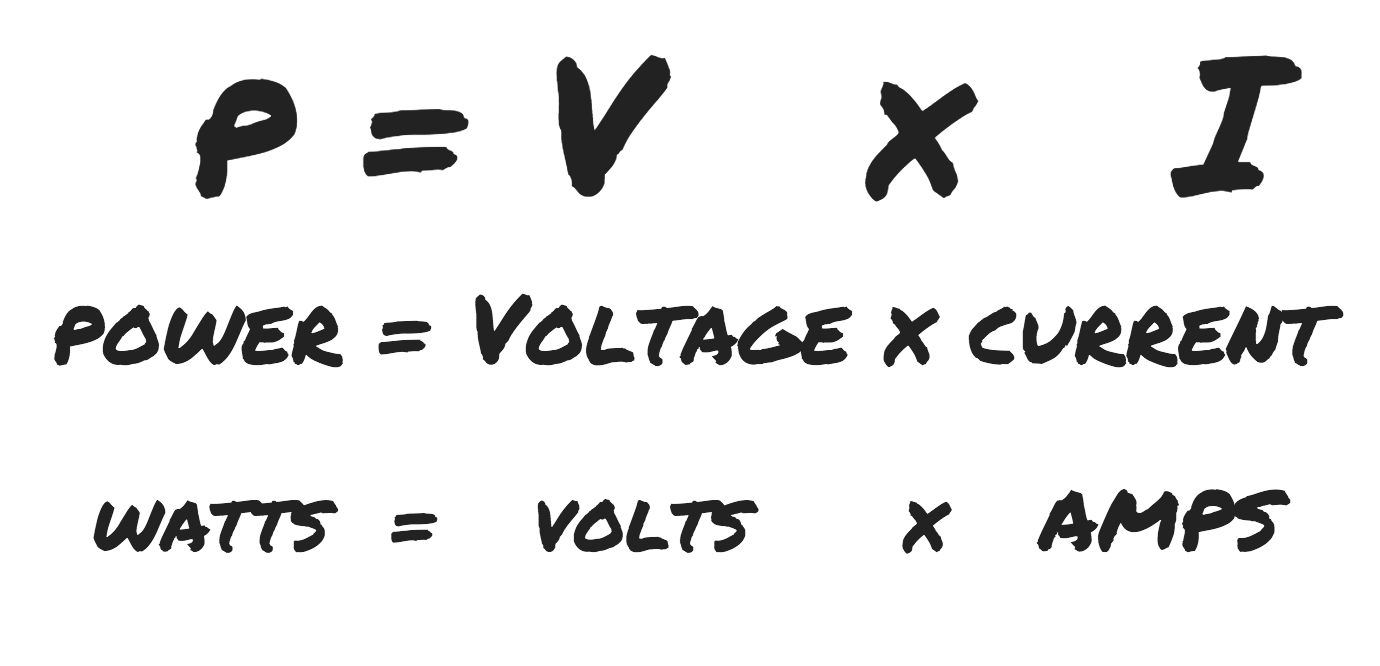
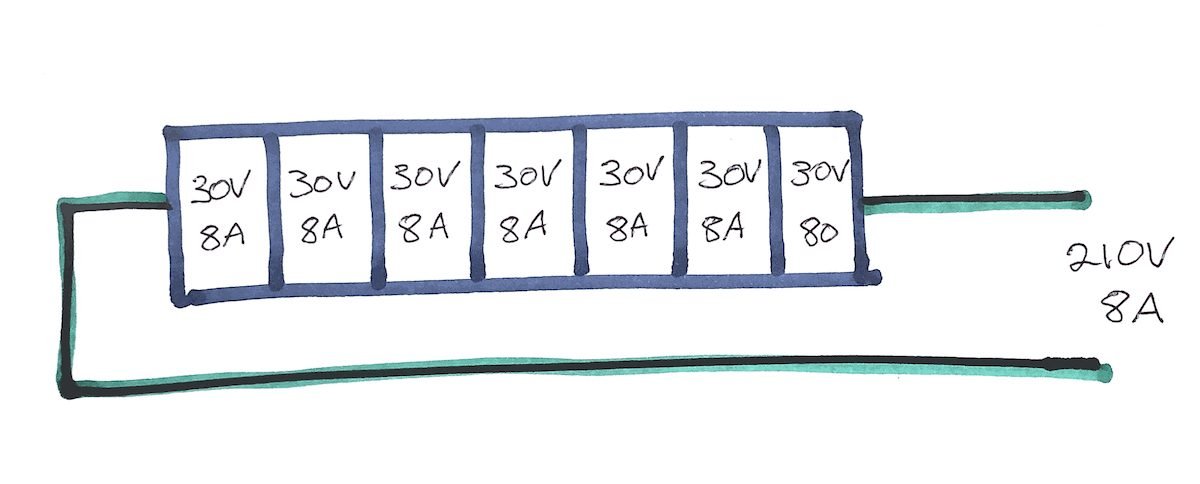
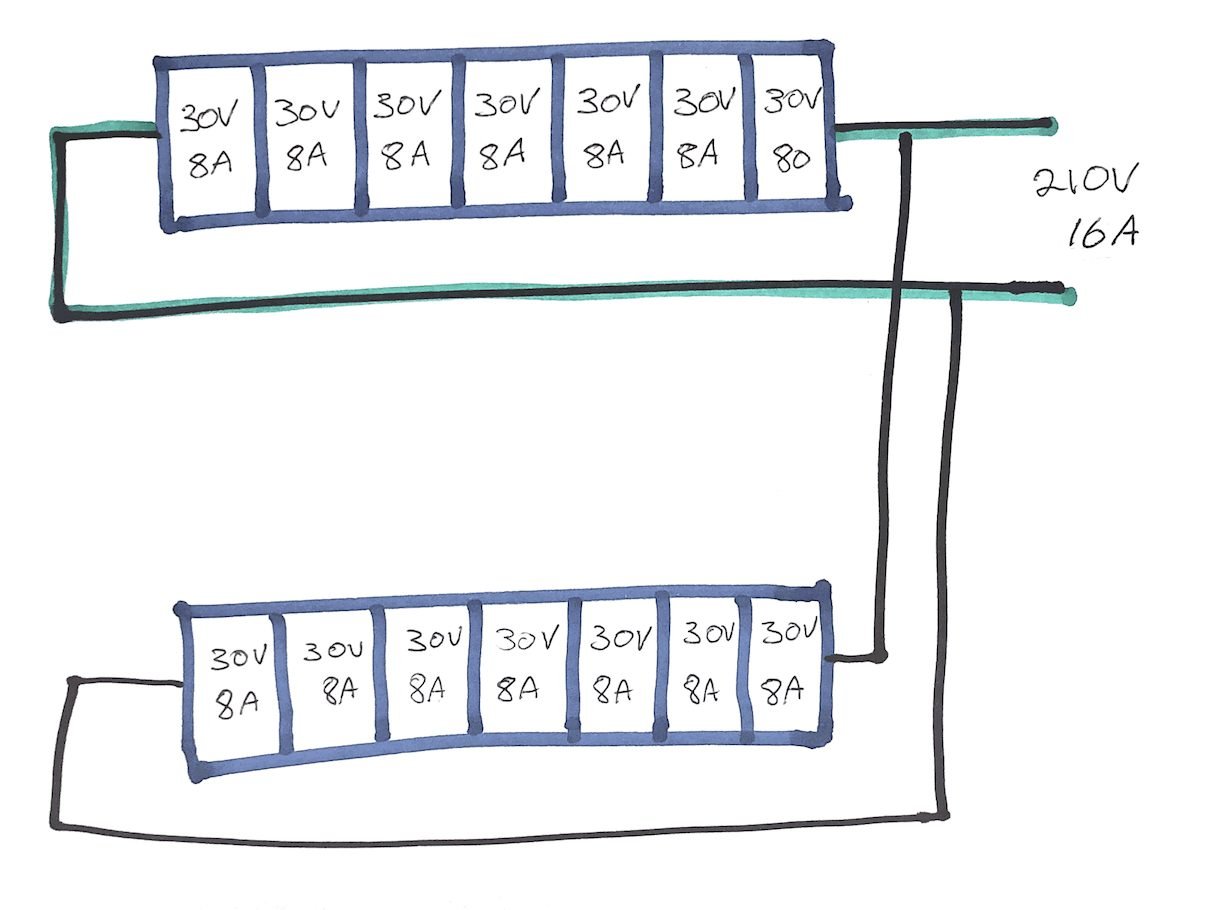

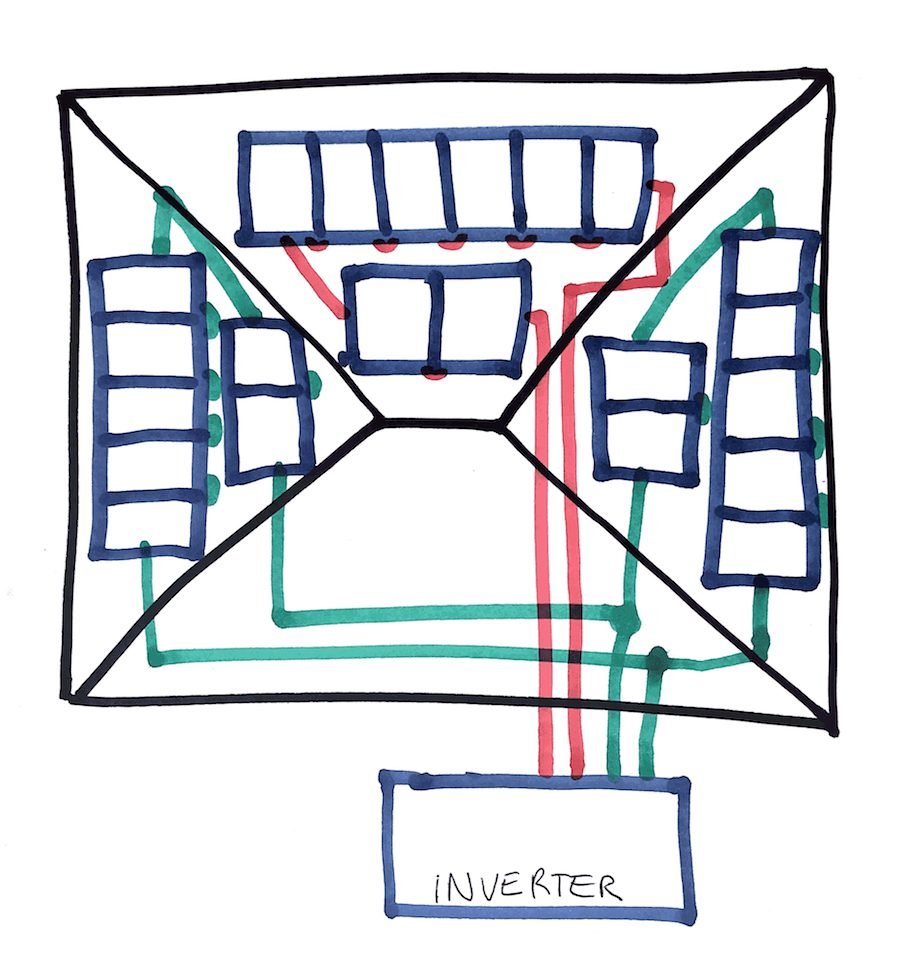
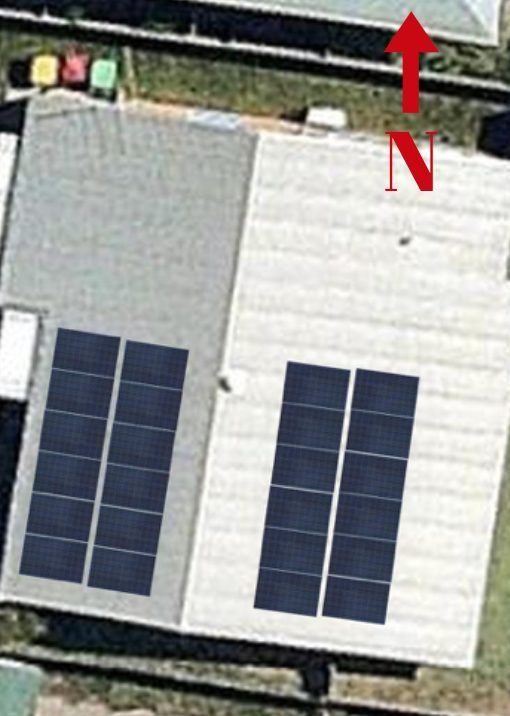
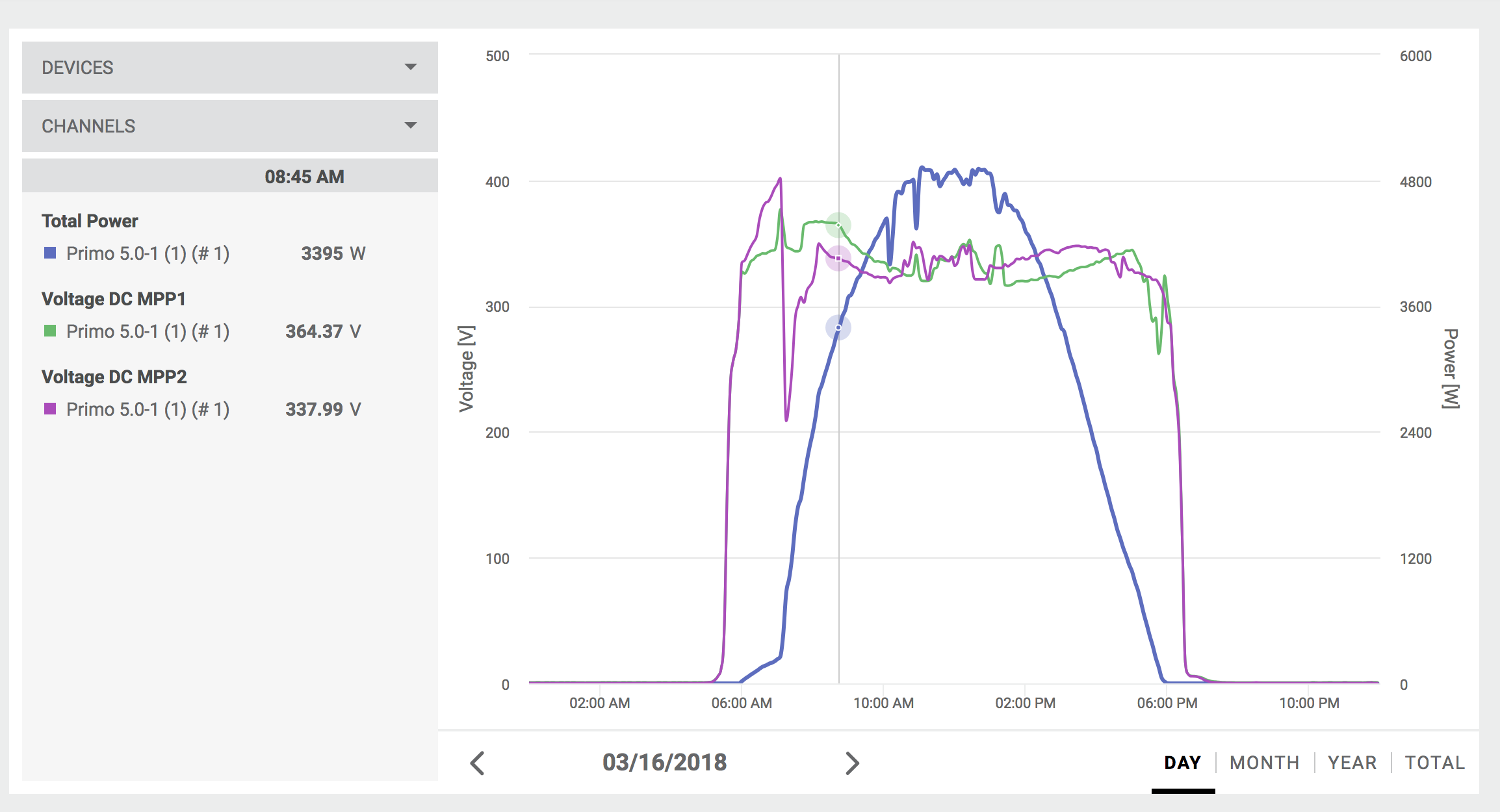

10 Responses
Hi Paul. Yes, you are correct that the same theory works for North and East Orientations. Given the panel numbers you’re talking about, an option that might be suitable for you could be one of the 3 input inverters currently on the market. Goodwe make one that has a very good reputation in the industry. We are currently testing it and the results so far are very promising. Be sure to look out for Marks review of it in the coming months.
HI Mark, Very interesting post, sadly I’m in NSW. I have an ugly roof line that results in 2/3 of my panels facing west and 1/3 north. I’m assuming the same theory works by using the parallel lines in north+east directions. However I can only fit half as many panels on the east as I can on the north. From what I understand the parallel strings must contain equal number of panels. Would the Tigo Retrofit Optimzer TS4-A-O fix this situation so I can utilise the east side or is it too big a difference for the parallel lines? There is also the potential issue the roof line may cause shadows on the east by mid afternoon. I would greatly appreciate your thoughts.
Hi Krrish. Sorry for a delayed reply and I hope you haven’t installed yet. That sounds like an expensive way to use a more affordable but inflexible inverter. I would try to stick with 1 inverter that can handle parallel input (Fronius). Then use larger panels and have even strings paralleled into one tracker. Should cost similar with a better result. Only use Tigo if absolutely necessary. It’s a weak point in the system.
Hi Mark, Thanks for the great and enlightening post. It covers almost all aspects of Solar and is a must read. I have a quick question and need your advise: I have limited roof space on my North and West roof but have more space on my East roof but on two different levels (tiers) and my Solar installer has suggested the below: 6 x Qcell Duo G5 panels on East roof on the lower level roof 8 x Qcell Duo G5 panels on East roof on the higher level roof These 2 to be connected to 2 different MPPT on a Sungrow 5 KW inverter 6 x Qcell Duo G5 330 panels on West roof 4 x Qcell Duo G5 330 panels on North roof These 2 to be connected to 2 different MPPT on second Sungrow 3 KW inverter I am keen on getting a 3 MPPT 8KW inverter and using Tigo optimizers for the North facing panels but it seems too pricey. Need your expert guidance.
Hi Jonothon, Strings have to be equal numbers if you parallel them (I’m pretty sure that’s in AS5033). Also, a string of 5 would be fairly short for the efficiency of the inverter. One way to do it would be to use Tigos on the 5 and 7, and string them in series.
Hi Mark, Thanks for all your info it’s great to read. I am a CEC accredited installer, (I am only quite new to this). I am wanting to install 5 panels on my north roof, 7 on my East and 8 on my West. Shading isn’t an issue except very early and late. Will it matter which two strings I parallel into 1 MPPT? Do I have to do East and West and do they have to be an even number of panels? Or can I do East and North? Would I need to use optimizers? Cheers.
Hi Marcin, SolarEdge isn’t an option. Even if it were reliable, this would be a bad design for SE. If you use Fronius, you will be running your voltages very low. It may only need three panels to operate, but at that voltage and power, it will run really inefficiently. In my mind, there is only 1 decent solution – Enphase. And it should not be too expensive (compared to putting Tigo’s on every panel.) So here is my advice – option 1, get 320W panels with IQ7 micros. Only put them in the better locations if your budget is tight. Even better, get SunPower 360W panels with IQ7X micros. Having high wattage panels is the most important thing when dealing with small shaded roofs, and Enphase is cost-effective when dealing with smaller systems and higher wattage panels. Enphase will also be more efficient and produce more power on this type of roof.
Hi Mark, I read your articles and I learnt lot about PV. I have small and complicated roof with shading areas ( 2 chimneyes from the South) in autumn, winter and spring time. I can instal max 3,7 kWp PV panels. It could be 12x305W. I am thinking about inverter 3kW 1 phase: Fronius 3.0-1 with Tigo or SE . I can install 4 on the East (E1,2, 3 without shadow and E4 will be partly shadowed all day from autumn to spring) , 4 on the West ( W1,2,3 without shadow, W4 will be shadowed to 11:00 from autumn to spring) and 4 on the South ( S1,2 will be shadowed after14:00 and S3,4 are shadowed before 9:30 from autumn to spring). Fronius 3.0-1 needs 3 active panels to generate power. I am thinking about 2 strings: E1-4,+ S1,2 and W1-4+ S3,4. Panels E4, W4 and S1-4 should be with Tigo optimalisers or bypass diodes should be enough? How can I connect panels to generate the most power? You are very expiriensed and I hope You will suggest my the best solution. Microinverters will be too expensive.
Hi Derrik, Timely question. I just got back from visiting both Tigo and Enphase in Silicone valley. Short of a long answer is I would be banking on Enphase. Expect at minimum a 5 per cent chance that one of your Micros will fail in 10 years – but if you have shade issues, the monitoring that Enphase offers as standard is the best option.
Hey Mark. Thanks for your articles. They are high quality and informative. I’ve been struggling a bit to find the best set up for my home and hope you can help me. My house faces south. I plan to have Solar panels on the North, East & West roof. The problem is I have a tall pole 14m to the north of my roof line. The height is 27m. At Latitude 36deg S, I calculated that it will cast a moving shadow across all my panels 6 months of the year. I figured I’d have to get Tigo or Enphase. Which set up would generate the most power? Thanks in advance for your help.